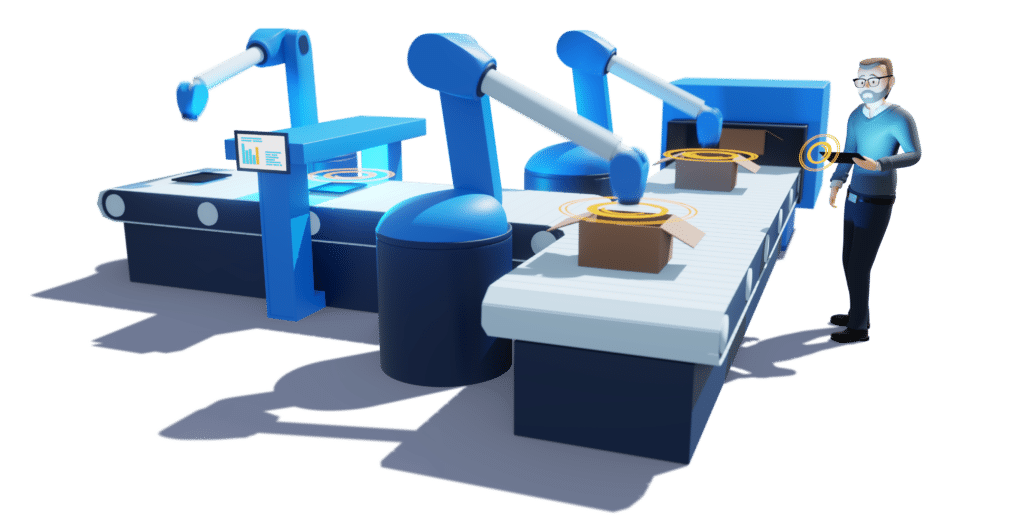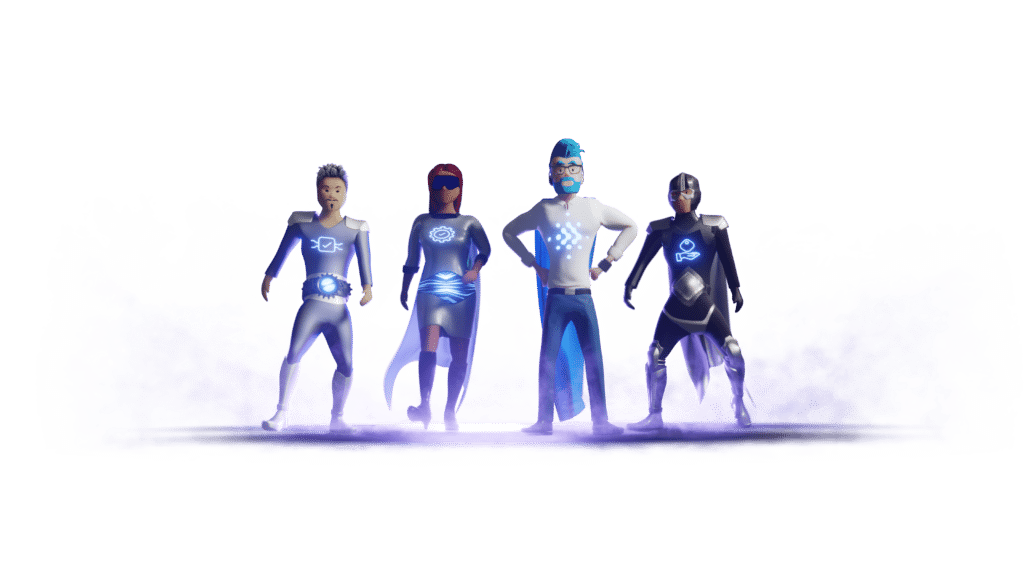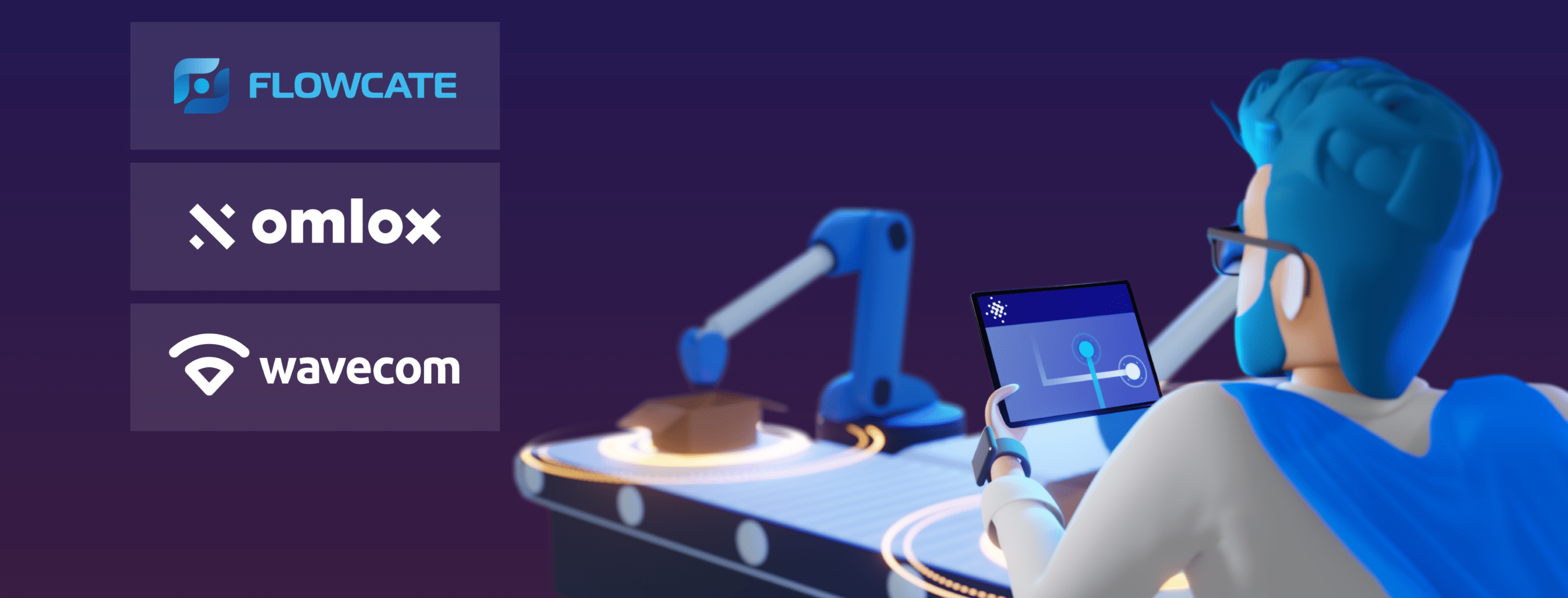In the rapidly evolving landscape of modern industries, Real-Time Location Systems (RTLS) have emerged as pivotal tools for enhancing operational efficiency and providing unprecedented insights into asset management and workflow optimization. At the forefront of this technological advancement are Flowcate and Wavecom, whose collaboration is setting new standards in the application of RTLS solutions. As we delve into the transformative impact of RTLS across various sectors, it’s crucial to acknowledge the unique requirements of different industries.
This article underscores the importance of breaking down generic RTLS concepts into industry-specific applications, demonstrating that, through software-driven RTLS solutions, it is seamlessly possible to cater to the diverse needs of the industry. By leveraging software-enabled RTLS solutions, we pave the way for a more interconnected and efficient industrial ecosystem, showcasing the collaborative innovation brought forth by Flowcate and Wavecom.
The Evolution of RTLS: Beyond Infrastructure
RTLS infrastructure tends to remain consistently in place since its initial implementation, allowing the true potential of its capabilities to emerge through the integration of versatile software solutions. The stability of the underlying RTLS framework serves as a reliable foundation, allowing software developers to innovate and create an array of applications tailored to diverse business needStandardization plays a pivotal role in this synergy, exemplified by initiatives like omlox, which provides a common framework for different RTLS technologies. Standardization fosters interoperability, simplifies integration efforts, and accelerates the development of applications that can seamlessly leverage the robust capabilities of RTLS infrastructure. This harmonious combination of stable infrastructure and standardized software not only enhances operational efficiency but also opens doors to novel and increasingly sophisticated business solutions.
Throughout the evolution of Real-Time Location Systems, clients have experienced significant advancements through customized software solutions and the adoption of the omlox standard for interoperability. From enhancing operational workflows to optimizing productivity – by focusing on creating solutions tailored to meet unique business requirements, companies like Flowcate and Wavecom enable organizations to fully exploit the capabilities of RTLS technology, thereby catalyzing efficiency improvements and supporting the deployment of creative solutions in diverse sectors.
Let’s dive a bit deeper: the next frontier in RTLS development embraces the concept of “software-defined” operations, a transformation that shifts the primary role from hardware to software, thus enhancing the flexibility and intelligence of the systems. This approach has given rise to Software-Defined Locating (SDL), where software innovation becomes the driving force behind the functionality and adaptability of location-based services.
SDL transcends traditional hardware limitations, focusing instead on sophisticated software solutions that manage and interpret data across various system layers. This shift facilitates more cohesive and scalable real-time tracking, crucial for modern logistical operations. At Flowcate, we champion this integration of physical and digital domains through our DeepHub, which serves as the core of our SDL initiatives. The DeepHub operates seamlessly across different environments, from local devices to cloud-based systems, illustrating our commitment to versatile and robust software solutions.
The evolution of RTLS transcends mere infrastructure, encompassing a dynamic ecosystem of software development and standardization efforts. As technology continues to advance, the symbiotic relationship between stable infrastructure and adaptable software solutions will continue to drive innovation and propel industries towards greater efficiency and competitiveness.
Transforming Operations: The Wide-Ranging Impact of Software-Driven RTLS Solutions Across Industries
The versatility of RTLS software solutions is transforming operations across a broad spectrum of industries, each with its unique set of challenges and demands. The critical role of software in tailoring RTLS technologies to meet these specific industry needs cannot be overstated. It is the software that interprets and utilizes the raw location data, turning it into actionable insights tailored to the nuances of each sector.
One of the standout examples of RTLS application is in batch manufacturing. In this sector, the precision and efficiency ofSoftware-Driven RTLS Solutions are leveraged to track materials and products through every stage of the manufacturing process. This tracking ensures timely and accurate monitoring of inventory, optimizes the manufacturing workflow, and significantly reduces the possibility of errors or delays. By providing real-time visibility into the location of batches, manufacturers can make informed decisions that enhance operational efficiency and productivity. This goes along with recent research about the adoption rate of RTLS in the manufacturing industry: RTLS technology is increasingly popular in manufacturing, with a projected average annual growth rate of 26.5%, indicating its growing importance in the industry¹.
However, the impact of Software-Driven RTLS Solutions extends far beyond batch manufacturing. In logistics, these solutions revolutionize supply chain management by offering unprecedented visibility into the movement of goods. This visibility enables logistics companies to optimize routing, reduce delivery times, and improve overall supply chain reliability.
Healthcare is another sector where RTLS technology is making a significant difference. The global RTLS market for healthcare is projected to grow from $2.0 billion USD in 2023 to $5.8 billion USD by 2028, at a Compound Annual Growth Rate (CAGR) of 23.5%². Hospitals and healthcare facilities are the primary users of RTLS technology. For instance, Texas Health Presbyterian Dallas Hospital reported saving $412,000 USD in the first year after implementing RTLS, demonstrating the potential cost savings and efficiency gains³.
RTLS is used to monitor the location of medical equipment, staff, and patients, leading to improved hospital management and patient care. By ensuring that critical equipment can be located instantly, healthcare providers can reduce wait times and improve the response time in emergencies, ultimately leading to better patient outcomes.
In the retail sector, RTLS are pivotal for enhancing both logistics and customer experiences. By ensuring real-time tracking of products from warehouse to sales floor, RTLS streamlines inventory management, reduces operational costs, and minimizes stock discrepancies. A great example for RTLS success in the retail industry is Lord and Taylor, a leading US shoe retailer using RFID to cut inventory labor by 75%. As a result, they saw an increase of more than 1.5% increase in sales⁴. Beyond logistics, RTLS enhances customer engagement by enabling personalized marketing and improving in-store navigation, leading to increased satisfaction and loyalty. The integration of RTLS with IoT and other technologies further optimizes store operations and provides valuable insights into customer behavior and store performance, making it an indispensable tool in the competitive retail landscape.
Across these varied sectors, Software-Driven RTLS Solutions stand out as a versatile tool that can be customized to address the distinct challenges faced by each industry. Whether it’s streamlining manufacturing processes, optimizing logistics operations, improving healthcare delivery, or transforming the retail experience, RTLS technology is proving to be indispensable in driving efficiency, enhancing safety, and fostering innovation.

Pioneering Software-Driven RTLS Solutions: The Flowcate and Wavecom Synergy
Flowcate’s DeepHub and Wavecom’s WHERE IS RTLS software are pioneering solutions within the omlox ecosystem, placing both companies at the forefront of RTLS software innovation.
Flowcate primarily operates within the middleware integration layer of the omlox ecosystem. DeepHub adds unique value by providing integration with the omlox standard. DeepHub serves as a middleware solution, connecting the raw data from RTLS with the application layer. It focuses on processing and interpreting location data, facilitating seamless integration and enhancing the overall intelligence derived from RTLS. Flowcate’s strength lies in optimizing data flow and connectivity within the ecosystem.
Wavecom positions itself within the application layer of the omlox ecosystem with their WHERE IS solution. WHERE IS specializes in providing precise and real-time location tracking. This application layer functionality is critical for applications such as asset tracking, and for providing business value through insights and analytics. Wavecom’s contribution enhances the end-user experience by delivering reliable location information and supporting specific use cases within the broader omlox framework.
The partnership between Flowcate and Wavecom transcends conventional collaboration, creating a symbiotic relationship that is pivotal for the advancement of RTLS. It is illustrating a perfect example of how middleware and application layers can combine to produce a superior RTLS solution, where DeepHub plays an important role as the middleware for applications like WHERE IS, enabling precise and real-time location tracking with unmatched efficiency.
DeepHub’s middleware technology ensures that the application layer seamlessly receives and utilizes the rich location data curated by DeepHub. This intricate connection not only guarantees the smooth operation of WHERE IS within the omlox ecosystem but also amplifies its capabilities, allowing it to deliver enhanced location intelligence and analytics. Through this profound interdependence, Flowcate and Wavecom are setting new standards for RTLS applications, demonstrating how a closely knit ecosystem can unlock new potentials in location-based technologies and services.

Real-World Implementations: Streamlining Batch Manufacturing in the Tire Industry
In the competitive realm of tire manufacturing, a leading company encountered significant challenges related to efficiency and time management on their expansive shop floor. With the task of navigating through thousands of square meters filled with indistinguishable stock and numerous batches, the workforce faced delays and inefficiencies. This was compounded by the necessity to adhere to a First In, First Out (FIFO) system, demanding precise coordination and tracking of batch processing and movement—activities that previously required manual scans and data inputs, further complicating the work-in-progress (WIP) tracking.
Addressing these challenges, the WHERE IS software emerged as a pivotal solution. It was integrated into Personal Digital Assistant (PDA) devices used by shop floor workers, leveraging the company’s existing business logic and specific reference numbers to pinpoint the exact location of any batch in real-time, filtered efficiently by the FIFO system. This technological intervention brought forth several transformative benefits:
- Streamlined Batch Locating: The real-time location capabilities of WHERE IS software eradicated the need for workers to conduct time-consuming searches for specific batches, thereby streamlining the process and enhancing workflow efficiency.
- Significant Time Savings: The automation and precision offered by WHERE IS drastically reduced the time spent on locating and processing batches. This acceleration in the workflow not only optimized production but also allowed for quicker adjustments to production schedules and demands.
- Optimized Workforce Utilization: The efficiency improvements realized with WHERE IS freed up the workforce from mundane and repetitive tasks. This allowed employees to redirect their focus towards more strategic, value-adding activities, thereby maximizing human resource potential and boosting overall productivity.
- Automated WIP Tracking: By automating the process of updating WIP data, the WHERE IS software minimized the risk of manual errors and ensured that the production status was always current and accurate, reflecting the dynamic nature of the shop floor.
This case not only highlights the challenges of managing a complex and dynamic production environment but also demonstrates the profound impact of deploying the right technological solutions. The tire manufacturer’s successful implementation of WHERE IS software showcases the potential for smart technologies to revolutionize traditional manufacturing processes, leading to significant efficiency gains, optimized resource allocation, and a solidified competitive edge in the industry.

Conclusion: Pioneering the Future with Software-Driven RTLS Solutions
As this article highlights, Software-driven RTLS solutions are revolutionizing industry operations, offering deep insights into asset management and workflow optimization. Through diverse sectors, including the detailed exploration within the tire manufacturing case study, we’ve seen the significant benefits and versatility of RTLS software solutions in making operations more streamlined and productive.
Looking forward, the partnership between Flowcate and Wavecom is set to further propel the industry towards an interconnected and intelligent future, paving the way for innovation and impacting industrial efficiency significantly. The collaborative efforts within the omlox ecosystem are not just about enhancing current systems but envisioning new possibilities that redefine what is achievable in asset tracking and management.
The ongoing evolution and application of RTLS technology by Flowcate and Wavecom promise a future where industries adapt swiftly to the ever-changing demands of the global market. As we stand on the brink of this new era, the continued innovation and synergy between these leaders in RTLS technology are poised to drive further breakthroughs, making the smart industrial ecosystem a tangible reality.
References
- https://navigine.com/blog/how-rtls-is-transforming-manufacturing-operations/
- https://www.marketsandmarkets.com/Market-Reports/rtls-healthcare-market-19089515.html
- https://www.grandviewresearch.com/industry-analysis/real-time-location-system-rtls-healthcare-market-report
- https://www.frost.com/frost-perspectives/rtls-for-logistics-and-transportation-tracking-warehouse-assets/
